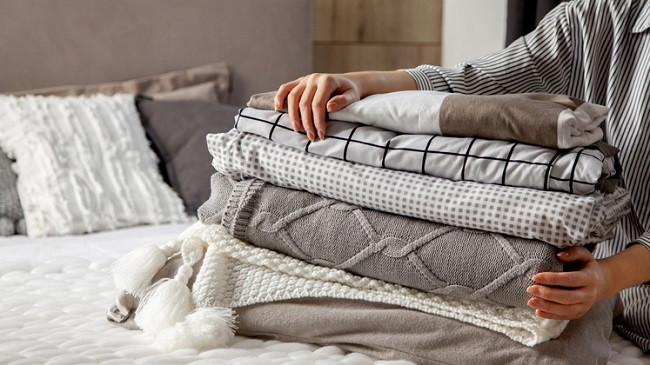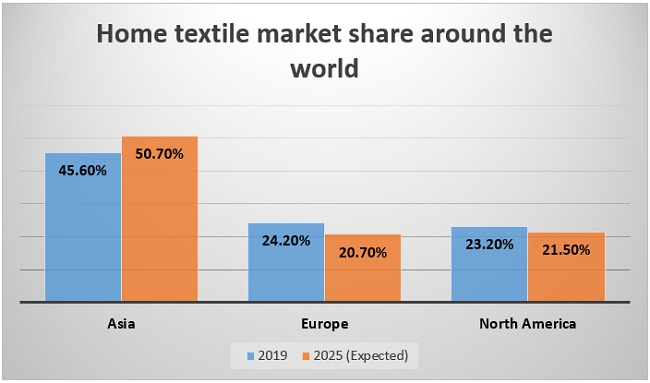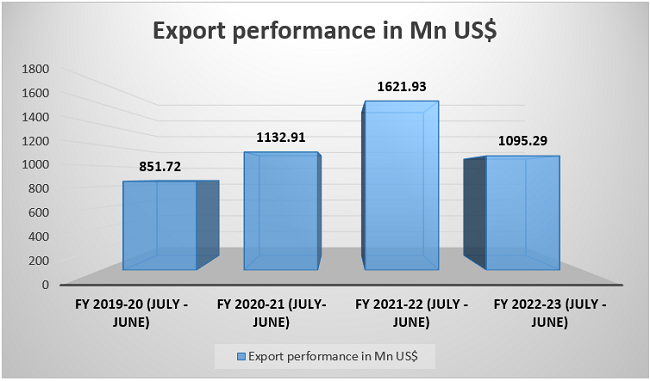Value addition to exportable garments increases faster to 65.97 per cent in the last fiscal, the highest in a decade, as expanding local backward-linkage industry spurs the growth.
The main export sector of Bangladesh, ready-made garment (RMG), used to depend on raw materials, particularly fabrics, imported under back-to-back LC and thus much of the export value would go out to the sourcing destinations.
Value addition to the export item remained almost static between 60.51 per cent and 64.32 per cent since fiscal year (FY) 2012-13 till FY2018-19, according to the Bangladesh Bank data.
Data analyses show that the rate fell to 56.49 per cent in FY20, and went up to 59.13 per cent in FY21 while again climbed down to 54.38 per cent in FY22.
But in the just-past FY 2022-23, Bangladesh’s apparel exports fetched US$46.99 billion, while import of raw materials cost $15.98 billion. Thus, the country’s net RMG-export earnings amounted to $31.0 billion in the last fiscal-accounting for 65.97-percent value addition.
The value addition was even higher than the pre-pandemic 64.32 per cent in FY 19, the data show.
The central bank considered the main head value of the components–raw cotton, synthetic/viscose fibre, synthetic/mixed yarn, cotton yarn, textile fabrics, and accessories for garments–instead of only the raw materials brought through back-to-back LCs, according to its latest quarterly report.
Industry-insiders said Bangladesh had largely relied on imported raw materials, such as cotton, fabric, petro-chemicals and chemicals, despite being the second-largest exporter of RMG. But the country has now developed strong backward-linkage industries, especially to knit and denim subsectors.
The value addition in the case of knitwear subsector is higher than in the woven segment, as the former sources 80 per cent of its required raw materials from local market, while woven fabrics demand is largely met by import, they noted.
Asked about the development, Bangladesh Garment Manufacturers and Exporters Association (BGMEA) Vice-President Md Shahidullah Azim said prices of raw materials had significantly gone up during the last couple of years – mainly because of the pandemic that had upended normal order of life.
“Though we got huge work orders, prices of finished products did not increase in line with the high prices of raw materials. The skyrocketing raw- material prices had eaten up our value addition in fiscal 21 and fiscal 22,” he said.
Prices of raw materials and freight costs are gradually decreasing compared to Covid period, and exporters are also sourcing raw materials locally due to dollar crisis.
Bangladesh is also producing diversified value-added garment items, he noted.
“Also we are now focusing more on developing local backward-linkage industries to address the post-graduation challenges,” the industry leader says about the dos in the cusp of transition.
Talking to the FE, Bangladesh Knitwear Manufacturers and Exporters Association (BKMEA) Vice-President Fazlee Shamim Ehsan also echoed the BGMEA leader’s views.
He, however, said they are now producing many high-value items which previously Bangladesh did not manufacture, and because of producing these items, value addition to RMG is increasing.
“Value addition to knit items is higher compared to that of woven,” he said, explaining that it is because they mostly manufacture products after total processing (yarn manufacturing, knitting and dyeing) in the country.
Export earnings from knitwear also increased on the back of high demand compared to that of woven garments accounting for 46.33 per cent of total RMG shipments worth $46.99 billion, he said.
On the other hand, buyers have their own nominations – mostly for fabrics sourcing, from third countries – in case of woven garments, he noted.
He, however, said value addition to denim, a subsector of woven items, also rose significantly due to development of its backward linkages, like fabrics making and washing.
Bangladesh became largest denim exporter to the US and the EU in 2022, he said, attributing the achievement to high value addition.
According to industry-insiders, the woven subsector of the country’s export industry is likely to face strict rules-of-origin (RoO) requirements in its major destinations, including the European Union (EU), after Bangladesh’s LDC graduation.
Local clothing producers will need to comply with double-transformation requirements, irrespective of their access to GSP or GSP-plus schemes.
Bangladesh needs to invest a huge amount to develop a backward- linkage industry for woven segment – not only to add more value but also to face the post-graduation challenges and ensure competitiveness, they noted.
Both the BGMEA and BKMEA leaders requested the government for providing required policy supports, including cash incentives for non-cotton or man-made fibre (MMF) production as well as soft loan to attract investment in this regard.
According to Bangladesh Textile Mills Association (BTMA), local textile millers meet 75-80 per cent of knitters’ demand for fabrics, while the percentage is only 35-40 for woven fabrics.
Bangladesh imported 571,640 tonnes of woven fabrics in 2022, up from 552,859 tonnes in 2021, according to the BTMA data.
Bangladesh Garment Accessories and Packaging Manufacturers and Exporters Association (BGAPMEA) sources say some 1,800 factories registered with the association meet more than 95 per cent of the RMG sector’s requirements for accessories.
munni_fe@yahoo.com





















